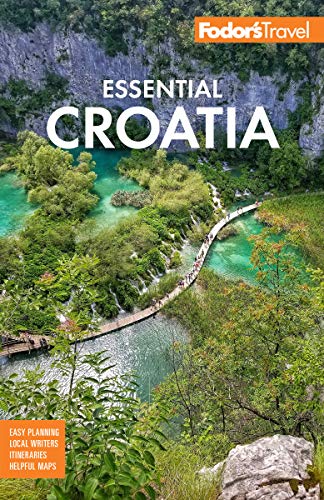Car
Gasoline
Most gas stations are open daily from 6 am to 8 pm; from June through September, many stations are open until 10 pm. In the bigger cities and on main international roads, stations offer 24-hour service. All pumps sell Eurosuper 95, Eurosuper 98, and Eurodiesel.
Parking
Most towns mark parking spaces with a blue line and a sign denoting time restrictions. Buy a ticket at the closest parking machine and leave it in the front window; make sure to carry coins because not all parking machines take bills or cards. The historic centers of walled towns along the coast (Split, Trogir, Hvar Town, Korčula, and Dubrovnik) are completely closed to traffic, putting heavy pressure on the number of parking spaces outside the fortifications (and since parking is limited, it is also expensive).
Road Conditions
The A1 highway that links Zagreb with Rijeka, Zadar, and Split is fast and has frequent, well-maintained rest stops. Construction has been underway for years to connect Dubrovnik to the highway, but for now it stretches only to Ploče, while the remaining 100 km (62 miles) to Dubrovnik is done by winding coastal road. It's not advisable to take a car to the islands as it can add hours to your itinerary when trying to board a car ferry, plus parking is usually limited. But if you decide to drive, remember that the roads are narrow, twisty, and unevenly maintained. During winter, driving through the inland regions of Gorski Kotar and Lika is occasionally made hazardous by heavy snow. Roads in Slavonia are typically flat, well marked, and well maintained.
Rules of the Road
Croatians drive on the right and follow rules similar to those in other European countries. Speed limits are 50 kph (30 mph) in urban areas, 90 kph (55 mph) in the outskirts, 110 kph (68 mph) on main roads, and 130 kph (80 mph) on motorways. Seatbelts are compulsory. The permitted blood-alcohol limit is 0.05%; drunk driving is punishable and can lead to severe fines. Talking on the phone while driving is prohibited unless the driver is using a hands-free device.
Driving Times
The A1 Highway connecting Zagreb to Rijeka, Zadar, and Split is the fastest route to Kvarner and Central Dalmatia. If traveling farther south to Dubrovnik, you will switch to the coastal road that passes through a 22 km (13 miles) section of Bosnia and Herzegovina, which can mean delays at the border; have your passport handy for this stretch.
Car Rentals
It is possible to rent a car quite cheaply in Croatia, for as little as €5 a day (excluding extras such as child seats, GPS, and insurance). Most major car rental companies are represented in the main tourist areas and airports, but you'll find the best rates online; check the website Auto Europe for the best deals.
In Croatia an International Driver's Permit is desirable but not necessary to rent a car from a major agency; a valid driver's license is all you need. The minimum age required for renting is usually 23 or older, and some companies also have maximum ages; be sure to inquire when making your arrangements.
If you intend to drive across a border, ask about restrictions on driving into other countries. Also, when you reserve a car, ask about cancellation penalties, taxes, drop-off charges (if you're planning to pick up the car in one city and leave it in another), and surcharges (for being under or over a certain age, for additional drivers, or for driving across state or country borders or beyond a specific distance from your point of rental). All these things can add substantially to your costs. Request car seats and extras such as GPS when you book.
Finally, make sure that a confirmed reservation guarantees you a car; agencies sometimes overbook, particularly for busy weekends and holiday periods.




